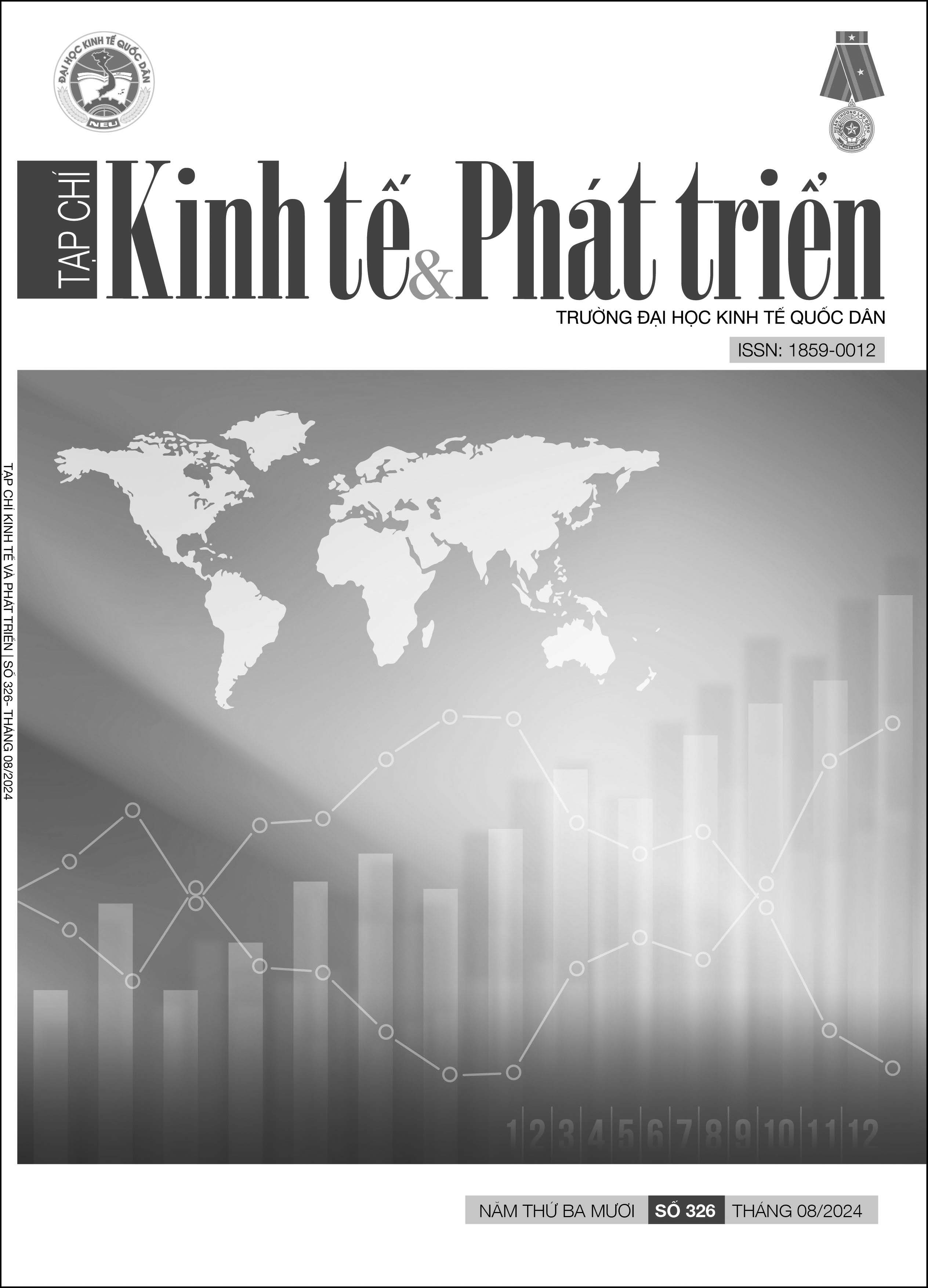Đầu tư và chi phí đại diện: Trường hợp các doanh nghiệp niêm yết Việt Nam
DOI:
https://doi.org/10.33301/JED.VI.1734Từ khóa:
Chi phí đại diện, tài chính nội bộ, đầu tư, đầu tư quá mứcTóm tắt
Nghiên cứu được thực hiện nhằm đánh giá đầu tư của doanh nghiệp và phân tích ảnh hưởng của chi phí đại diện đến đầu tư. Dữ liệu nghiên cứu được thu thập từ các doanh nghiệp niêm yết trong giai đoạn từ 2013-2022. Với phương pháp ước lượng bình phương tối thiểu tổng quát (GLS), trước tiên, kết quả cho thấy đầu tư phụ thuộc vào nguồn tài chính nội bộ, do đó thị trường tài chính Việt Nam là không hoàn hảo, dẫn đến các doanh nghiệp có thể phải đối mặt với vấn đề chi phí đại diện. Tiếp theo, kết quả chỉ ra rằng so với các doanh nghiệp có chi phí đại diện thấp, các doanh nghiệp có chi phí đại diện cao hơn thì độ nhạy cảm của đầu tư đối với nguồn tài chính nội bộ là lớn hơn. Hàm ý, việc thặng dự nguồn tài chính nội bộ sẽ ảnh hưởng đến mức độ đầu tư, các doanh nghiệp có chi phí đại diện lớn và thặng dư vốn nội bộ có nhiều khả năng sẽ đầu tư quá mức.
Tài liệu tham khảo
Ang, J.S., Cole, R.A. & Lin, J.W. (2000), ‘Agency costs and ownership structure’, The Journal of Finance, 55(1), 81-106.
Baltagi, B.H. & Baltagi, B.H. (2008), Econometric analysis of panel data (Vol. 4), Springer.
Carpenter, R.E. (1995), ‘Finance constraints or free cash flow? A new look at the life cycle model of the firm’, Empirica, 22, 185-209.
Chen, L., Liu, C. & Wang, G. (2013), ‘Financial constraints, investment efficiency and corporate governance: Empirical evidence from China’, presentation at 10th International Conference on Service Systems and Service Management, Hong Kong, China, July 17th - 19th.
Chen, X., Sun, Y. & Xu, X. (2016), ‘Free cash flow, over-investment and corporate governance in China’, Pacific-Basin Finance Journal, 37, 81-103.
Fazzari, S., Hubbard, R.G. & Petersen, B.C. (1987), Financing constraints and corporate investment, National Bureau of Economic Research Cambridge, Mass., USA.
Grossman, S.J. & Hart, O.D. (1982), ‘Corporate financial structure and managerial incentives’, in The economics of information and uncertainty, McCall, J. (Ed.), University of Chicago Press, 107-140.
Guariglia, A. & Yang, J. (2016), ‘A balancing act: managing financial constraints and agency costs to minimize investment inefficiency in the Chinese market’, Journal of Corporate Finance, 36, 111-130.
Guizani, M. & Ajmi, A.N. (2021), ‘Financial conditions, financial constraints and investment-cash flow sensitivity: evidence from Saudi Arabia’, Journal of Economic and Administrative Sciences, 37(4), 763-784.
Jensen, M.C. (1986), ‘Agency costs of free cash flow, corporate finance, and takeovers’, The American economic review, 76(2), 323-329.
Jensen, M.C. & Meckling, W.H. (1976), ‘Theory of the Firm: Managerial Behavior, Agency Costs and Ownership Structure’, Journal of Financial Economics, 3(4), 305-360.
Le, K.N. (2003), ‘Investment of rice mills in Vietnam: the role of financial market imperfections and uncertainty’, Thesis fully internal (DIV), University of Groningen.
Lima Crisóstomo, V., Javier López Iturriaga, F. & Vallelado González, E. (2014), ‘Financial constraints for investment in Brazil’, International Journal of Managerial Finance, 10(1), 73-92.
Lin, Z.J., Liu, S. & Sun, F. (2017), ‘The impact of financing constraints and agency costs on corporate R&D investment: Evidence from China’, International Review of Finance, 17(1), 3-42.
Mohamed, E.B. (2021), ‘Managerial optimism, investment cash flow sensitivity and agency costs: evidence from NYSE panel data firms’, Journal of Behavioral and Experimental Finance, 30, 100481.
Morgado, A. & Pindado, J. (2003), ‘The underinvestment and overinvestment hypotheses: An analysis using panel data’, European Financial Management, 9(2), 163-177.
Pawlina, G. & Renneboog, L. (2005), ‘Is investment‐cash flow sensitivity caused by agency costs or asymmetric information? Evidence from the UK’, European Financial Management, 11(4), 483-513.
Plasmans, J. (2006), Modern linear and nonlinear econometrics, Vol. 9, Springer Science & Business Media.
Richardson, S. (2006), ‘Over-investment of free cash flow’, Review of accounting studies, 11(2), 159-189.
Vogt, S.C. (1994), ‘The cash flow/investment relationship: evidence from US manufacturing firms’, Financial Management, 23(2), 3-20.
Wibawa, B.A. & Wardhani, R. (2018), ‘The effect of conditional conservatism and agency cost on investment-cashflow sensitivity’, International Research Journal of Business Studies, 10(2), 69-88.
Xu, X. & Xu, H. (2019), ‘Investmnt-internal capital sensitivity, investment-cash flow sensitivity and dividend payment’, China Finance Review International, 9(2), 183-207.
Yeo, H.J. (2018), ‘Role of free cash flows in making investment and dividend decisions: The case of the shipping industry’, The Asian Journal of Shipping and Logistics, 34(2), 113-118.





